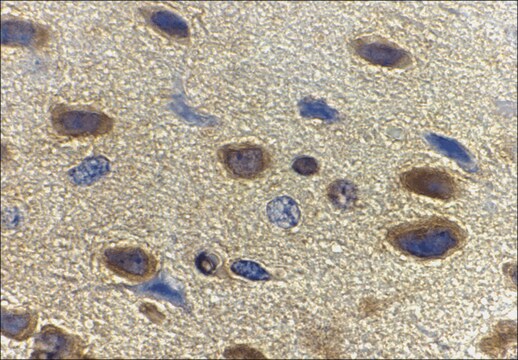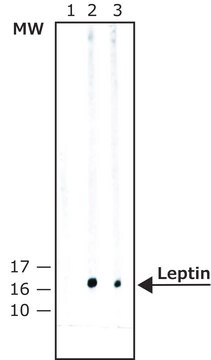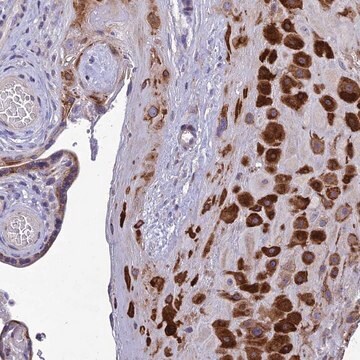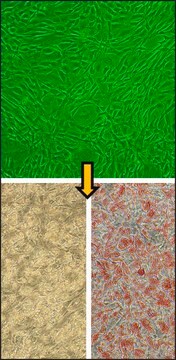A6354
Anti-Adiponectin antibody produced in rabbit
~1 mg/mL, affinity isolated antibody, buffered aqueous solution
Synonim(y):
Adiponectin Antibody, Anti-Adiponectin antibody produced in rabbit, Anti-Adipocyte Complement-Related Protein of 30 kDa
About This Item
Polecane produkty
pochodzenie biologiczne
rabbit
Poziom jakości
białko sprzężone
unconjugated
forma przeciwciała
affinity isolated antibody
rodzaj przeciwciała
primary antibodies
klon
polyclonal
Postać
buffered aqueous solution
reaktywność gatunkowa
mouse, human
stężenie
~1 mg/mL
metody
western blot (chemiluminescent): 0.5-1 μg/mL using using human plasma or placenta, or an extract of differentiated 3T3-L1 mouse cells. (It is recommended to dilute the antibody in phosphate buffered saline containing 0.5% non-fat dry milk for background staining reduction.)
numer dostępu UniProt
Warunki transportu
dry ice
temp. przechowywania
−20°C
docelowa modyfikacja potranslacyjna
unmodified
informacje o genach
human ... ADIPOQ(9370)
mouse ... Adipoq(11450)
Opis ogólny
Specyficzność
Immunogen
Zastosowanie
Western Blotting (1 paper)
Działania biochem./fizjol.
Postać fizyczna
Oświadczenie o zrzeczeniu się odpowiedzialności
Nie możesz znaleźć właściwego produktu?
Wypróbuj nasz Narzędzie selektora produktów.
Kod klasy składowania
10 - Combustible liquids
Klasa zagrożenia wodnego (WGK)
WGK 3
Temperatura zapłonu (°F)
Not applicable
Temperatura zapłonu (°C)
Not applicable
Certyfikaty analizy (CoA)
Poszukaj Certyfikaty analizy (CoA), wpisując numer partii/serii produktów. Numery serii i partii można znaleźć na etykiecie produktu po słowach „seria” lub „partia”.
Masz już ten produkt?
Dokumenty związane z niedawno zakupionymi produktami zostały zamieszczone w Bibliotece dokumentów.
Nasz zespół naukowców ma doświadczenie we wszystkich obszarach badań, w tym w naukach przyrodniczych, materiałoznawstwie, syntezie chemicznej, chromatografii, analityce i wielu innych dziedzinach.
Skontaktuj się z zespołem ds. pomocy technicznej






